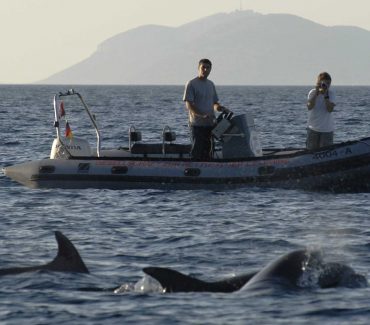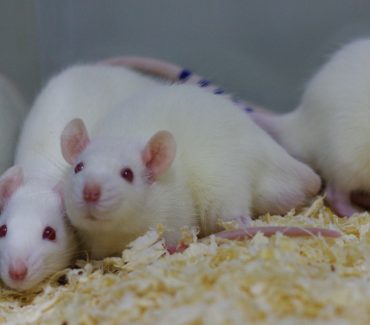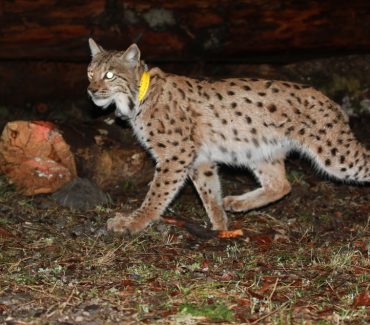
The research group of the Department for Hygiene, Technology and Food Safety consists of all teachers and associates of the Department, and the research topics that the group deals with are easiest to define as veterinary public health. However, in recent years, significant focus has been placed in the group’s research on antimicrobial resistance, improving the food safety system, innovations in the production of meat and dairy products, connecting the entire cycle of animal breeding with product quality and safety, and researching the opinions of Croatian consumers.
The Department’s research group regularly cooperates with other scientific institutions in the country and abroad through professional and scientific projects, and many of its research activities can be attributed to the excellent long-term cooperation with entities in the food business, which represent the most important polygons for the implementation of field parts of research.

In recent decades, the Department has been extremely active in the implementation of international and domestic professional and scientific projects, of which perhaps the most important are the following:
- Safety of traditional fermented sausages: research on protective cultures and bacteriocins. INCO project EU, FP5;
- Quality Management of Food Products. TEMPUS CD-19068-2004;
- BASELINE Selection and improving of fit-for-purpose sampling procedures for specific foods and risks. FP/-KBBE-2007-2A Collaborative project;
- The potential of microencapsulation in cheese production, KK.01.1.1.04.0058. ERDF EU; CEKOM 3LJ, KK.01.2.2.03.0017.
- IRI projekt Antimikrobni potencijal aromatskog bilja u sirarstvu. Fond za regionalni razvoj EU;
- Sustainable production of traditional cheeses from local sheep milk, in the Balkans. Ensuring of traditional cheeses hygiene and quality, SEE-ERA.NET PLUS;
- Animal WelfAre Research in an enlarged Europe (AWARE). FP7-KBBE;
- FP7 PROMISE Protection of consumers by microbial risk mitigation through combating segregation of expertise, FP7;
- CA15134 – Synergy for preventing damaging behaviour in group housed pigs and chickens GroupHouseNet. COST EU;
- CA18208 Novel tools for test evaluation and disease prevalence estimation. COST EU;
- Enhancing Innovation and Sustainability in Adriatic Aquaculture (ADRIAQUANET). Interreg Italy – Croatia, Blue Inovation;
- CA18105 Risk-based meat inspection and integrated meat safety assurance. COST EU;
- CA20128 – Promoting Innovation of ferMENTed fOods. COST EU (2021. – 2025.);
- Innovative functional products made from lamb meat, HRZZ.
The projects and equipment represent an excellent foundation for Department’s employees so that they are able to publish a significant number of scientific and professional publications. Here we highlight only a few of the most significant ones in the past few years:
- Kiš, Marta; Fuštin, Dunja; Zdolec, Nevijo (2023):Relevance of Meat Juice Seroprevalence and Presence of Yersinia enterocolitica and Salmonella spp. in Pig Tonsils for Risk Management at Slaughter. Processes, 11, 2234, 10. DOI: https://doi.org/10.3390/pr11082234
- Zdolec, N., Bogdanović, T., Severin, K., Dobranić, V., Kazazić, S., Grbavac, J., Pleadin, J., Petričević, S., Kiš, M. (2022) Biogenic Amine Content in Retailed Cheese Varieties Produced with Commercial Bacterial or Mold Cultures. Processes, 10, 1, 10.
- Zdolec, N., Kiš, M., Jankuloski, D., Blagoevska, K., Kazazić, S., Pavlak, M., Blagojević, B., Antić, D., Fredriksson-Ahomaa, M., Pažin, V. (2022) Prevalence and persistence of multidrug-resistant Yersinia enterocolitica 4/O:3 in tonsils of slaughter pigs from different housing systems in Croatia. Foods, 11 (10), 1459.
- Zdolec, N., Kotsiri, A., Houf, K., Alvarez-Ordóñez, A., Blagojevic, B., Karabasil, N., Salines, M., Antic, D. (2022) Systematic Review and Meta-Analysis of the Efficacy of Interventions Applied during Primary Processing to Reduce Microbial Contamination on Pig Carcasses. Foods, 11, 2110, 18.
- Bratulić, M., Mikuš, T., Cvrtila, Ž., Cenci-Goga, B., Grispoldi, L., Pavunc, A., Novak, J., Kos, B., Šušković, J., Zadravec, M., Garofalo, C., Ekert Kabalin, A., Kozačinski, L. (2021) Quality of traditionally produced Istrian sausage and identification of autochthonous lactic acid bacteria strains as potential functional starter cultures. European Food Research and Technology, 247, 1-25.
- Cvrtila, Ž.; Šporec, A.; Kozačinski, L.; Mikuš, T.; Njari, B.; Bratulić, M.; Špoljarić, D.; Popović, M. (2023): Influence of the addition of Agaricus bisporus in the diet on the volatile profile of lamb meat. Veterinarski arhiv, 93, 71-84.
- Zadravec, M.; Mikuš, T.; Pradervand, N.; Ujčič Vrhovnik, I. (2023): Microbiological Quality of Feed. Open agriculture, 17, 1-8. DOI: 10.2174/18743315-v17-e230418-2022-66
- Vulić, A.; Lešić, T.; Kudumija, N.; Mikuš, T.; Pleadin, J. (2019): Resorcylic acid lactones in urine samples of Croatian farm animals. Journal of analytical toxicology, 4, 126-133. DOI: 10.1093/jat/bky069
- Abbas, Oissam ; Zadravec, Manuela ; Baetan, Vincent ; Mikuš, Tomislav ; Lešić, Tina ; Vulić, Ana ; Prpić, Jelena ; Jemeršić, Lorena ; Pleadin, Jelka (2018): Analytical methods used for the authentication of food of animal origin // Food chemistry, 246, 6-17. DOI: 10.1016/j.foodchem.2017.11.007
- Mikuš, Tomislav ; Radeski, Miroslav ; Cziszter, Ludovic Toma ; Dimitrov, Ivan ; Jurkovich, Viktor ; Nenadović, Katarina ; Ostović, Mario ; Zupan, Manja ; Kirchner, Marlene Katharina (2018): The Danube Region—On Stream with Animal Welfare Assessment in the Last 35 Years: A Review of Research on Animal Welfare Assessment in a Multi-lingual Area in Europe. Journal of agricultural and environmental ethics, 31, 511-526. DOI: 10.1007/s10806-018-9737-4
Since the establishment of the Croatian Food Agency (now the Croatian Agency for Agriculture and Food – HAPIH), the research team members have continuously participated in the agency’s activities, from conducting research, participating in opinion publications to membership and leadership in Scientific Committees and membership in the Scientific Council. In addition to cooperation with HAPIH, the Institute’s employees are also members of EFSA’s networks and regularly attend and actively participate in meetings, round tables and other events as part of EFSA’s activities. As part of the aforementioned activities, they participated in the publication of many HAPIH documents and several EFSA documents.

 Faculty of
Faculty of 


